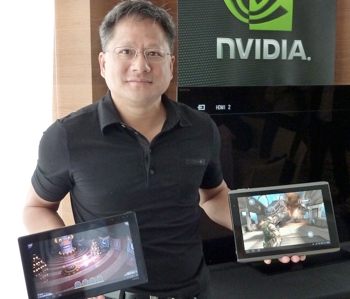Nvidia posted solid financial results for its fiscal third quarter ended October 28, helped by the growing demand for Tegra chips in smartphones and tablets as well as a successful rollout of its Kepler-based graphics lineup for PCs. Net income during the period rose to $209.1 million, up from $178.3 million a year earlier, on record revenue of $1.2 billion. That represents a 12.9% jump in revenue over last year and a 15.3% jump over the last quarter.
Discussing the PC side of things, Nvidia CEO Jen-Hsun Huang told analysts during a conference call that their Kepler family of graphics processors is gaining ground against rival AMD across the special-purpose markets the company serves, from gaming to design to supercomputing. Some of their growth came from a major win in the high-performance computing market to provide GPU accelerator cards for the Oak Ridge National Laboratory's Titan, but the consumer GPU unit also saw a 10% quarterly bump in revenue.
Despite this the company acknowledged there's a slump in demand for personal computers that Tegra chips used in smartphones and tablets are helping make up for. In fact, some 30% of the company's income is now derived from "non-PC" chips, up from 7% just three years ago. Nvidia's Tegra 3 SoC powers some of this year's highlight devices like HTC's One X, Google's Nexus 7, and Microsoft's Surface RT tablet.
Huang is optimistic about the transformation Nvidia is seeing as it dives into the mobile market. According to the CEO, consumers now realize that a "great tablet is better than a cheap PC," but they don't really see much cannibalization between their product lines because Nvidia doesn't "play in the cheap PC market."
